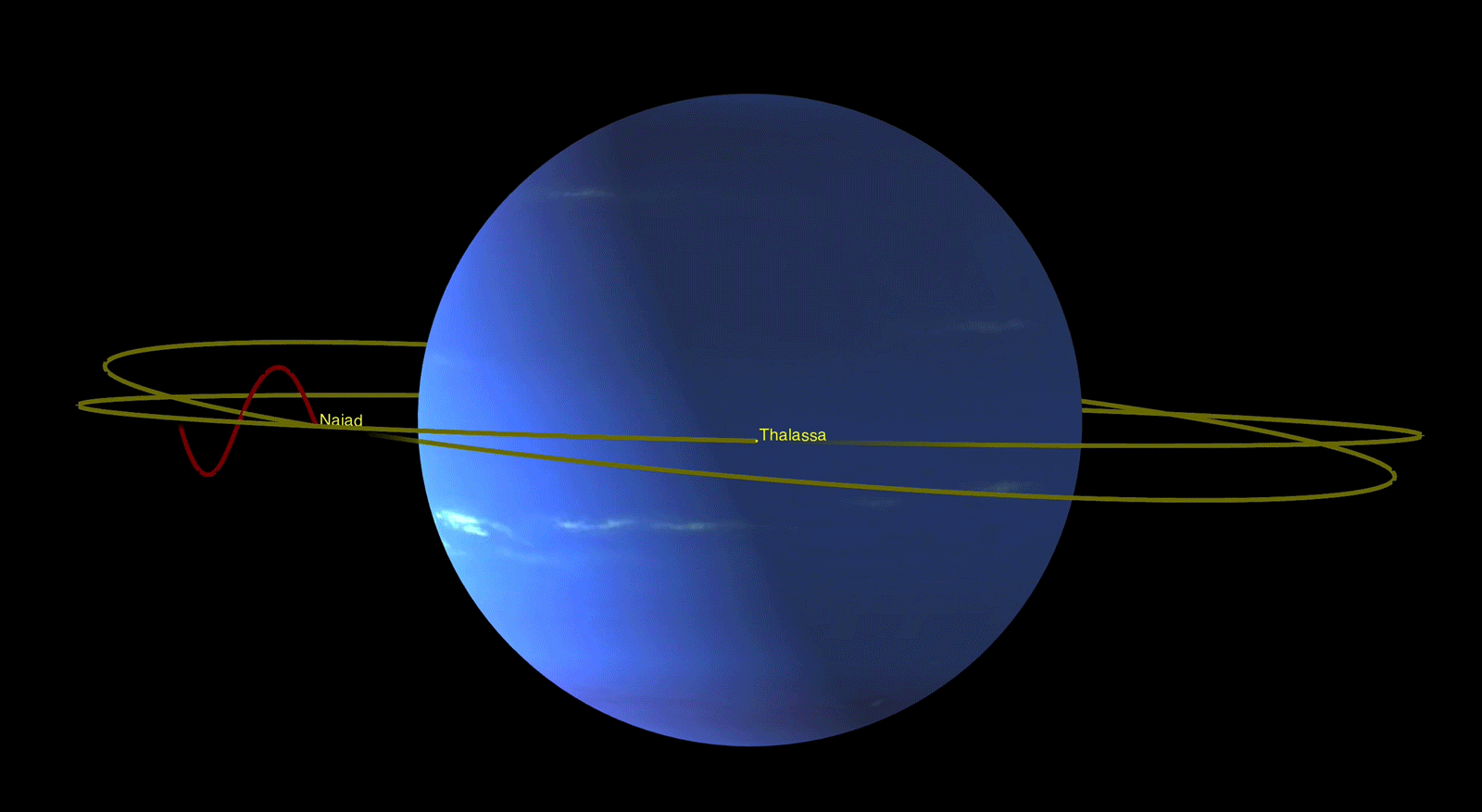Blog
Stable Wobble
22 November 2019
 NASA/JPL-Caltech
NASA/JPL-CaltechThe outer planets generally have lots of little moons orbiting them. As a result, things can get a bit crowded. When moons orbit a planet in similar orbits, their gravitational tugs on each other can cause the orbits to shift over time. Sometimes this causes them to collide, but often gravity tugs moons into resonances. These resonances keep their orbits stable and keep the moons from hitting each other.
The Galilean moons of Jupiter are probably the best example of this. The orbits of Io, Europa and Ganymede have a 1:2:4 resonance. For every one orbit of Ganymede, Europa orbits twice, and Io orbits four times. This pattern keeps the moons locked in a stable pattern. Saturn’s moons Hyperion and Titan have a similar resonance, where Titan orbits four times for every three orbits of Hyperion.
Sometimes, however, moons can be found in much stranger resonant patterns. Two small moons of Saturn, Janus and Epimetheus, share almost the same orbit. Their orbits are so close to each other you would think they’d collide. But instead, they do an interesting orbital dance. When one of the moons orbits slightly closer to Saturn, it gradually catches up with the other. When the two are relatively close, the gravity of the inner moon pulls the outer moon toward Saturn. In turn, the gravity of the outer moon pulls the inner moon away from Saturn a bit. Essentially the two moons switch orbits, and after a near-miss, they speed apart again.
The gravitational dance of small moons can be complex, though they generally orbit within a similar orbital plane. Now a paper in Icarus shows how moons can dance when they have different orbital planes.1
The two innermost moons of Neptune, Naiad and Thalassa, have a similar distance from the planet. Naiad orbits Neptune every seven hours, while Thalassa takes a half-hour longer to make an orbit. But Naiad’s orbit is tilted about five degrees from Thalassa’s. From Thalassa’s point of view, Naiad wobbles up and down as it catches up and speeds away from Thalassa. In this new paper, the team showed that Naiad’s wobbling pattern is locked in a resonance with the orbit of Thalassa, and this resonance connects the two moons in a stable pattern.
Orbital dynamics can be complex and subtle. This discovery shows yet again how resonant orbits can happen in strange and wondrous ways.
Brozović, Marina, et al. “Orbits and resonances of the regular moons of Neptune.” Icarus (2019): 113462. ↩︎